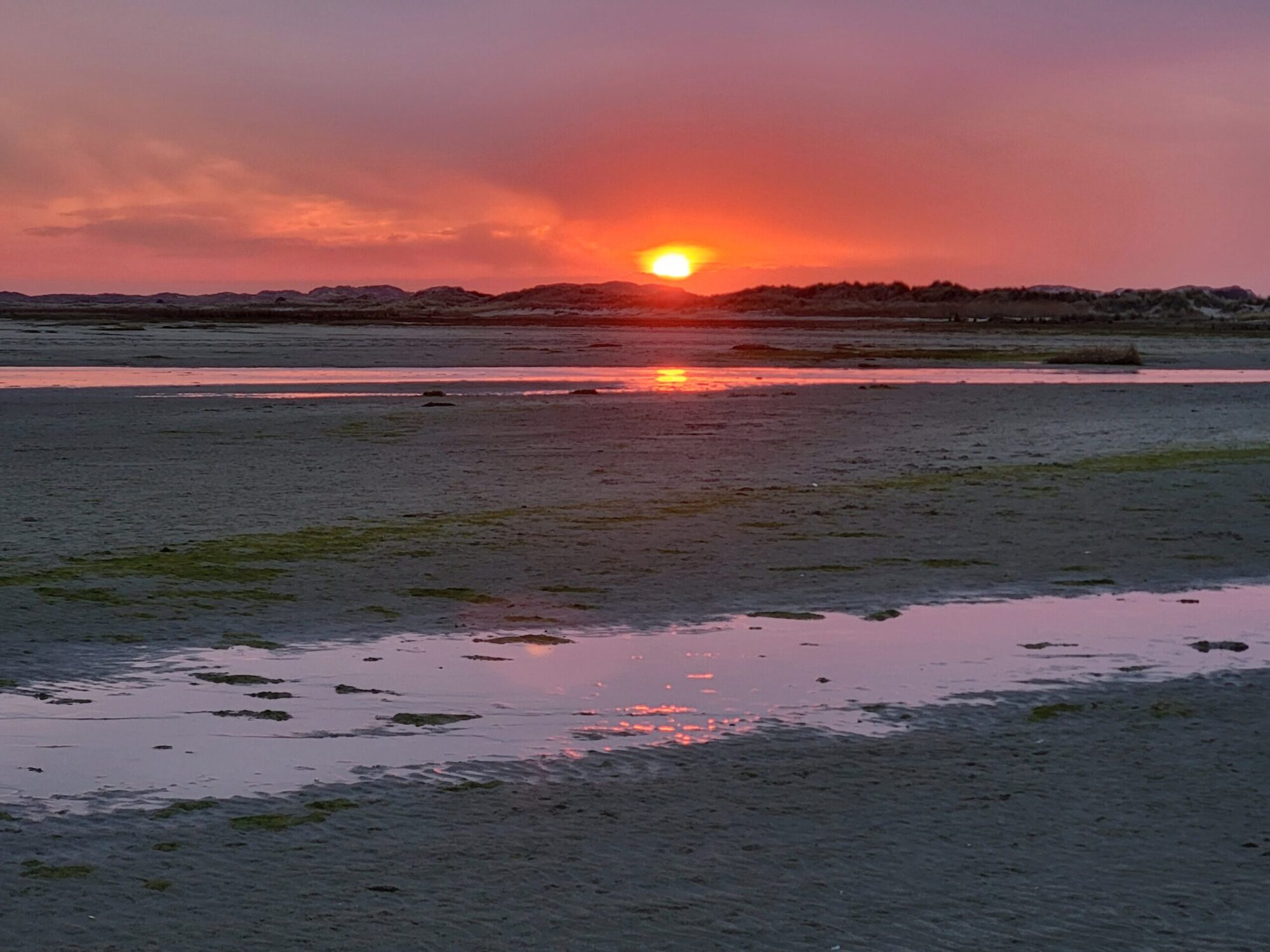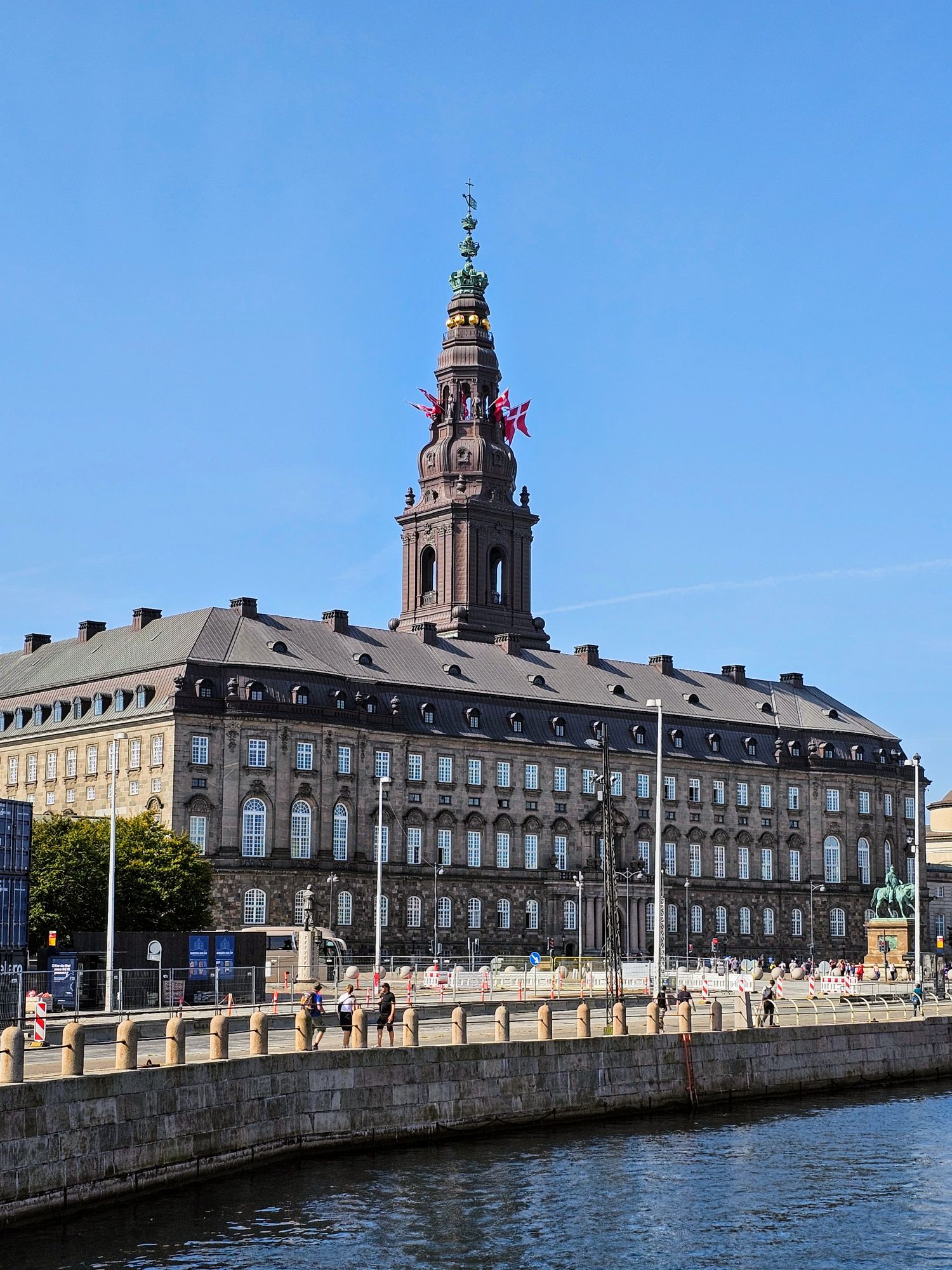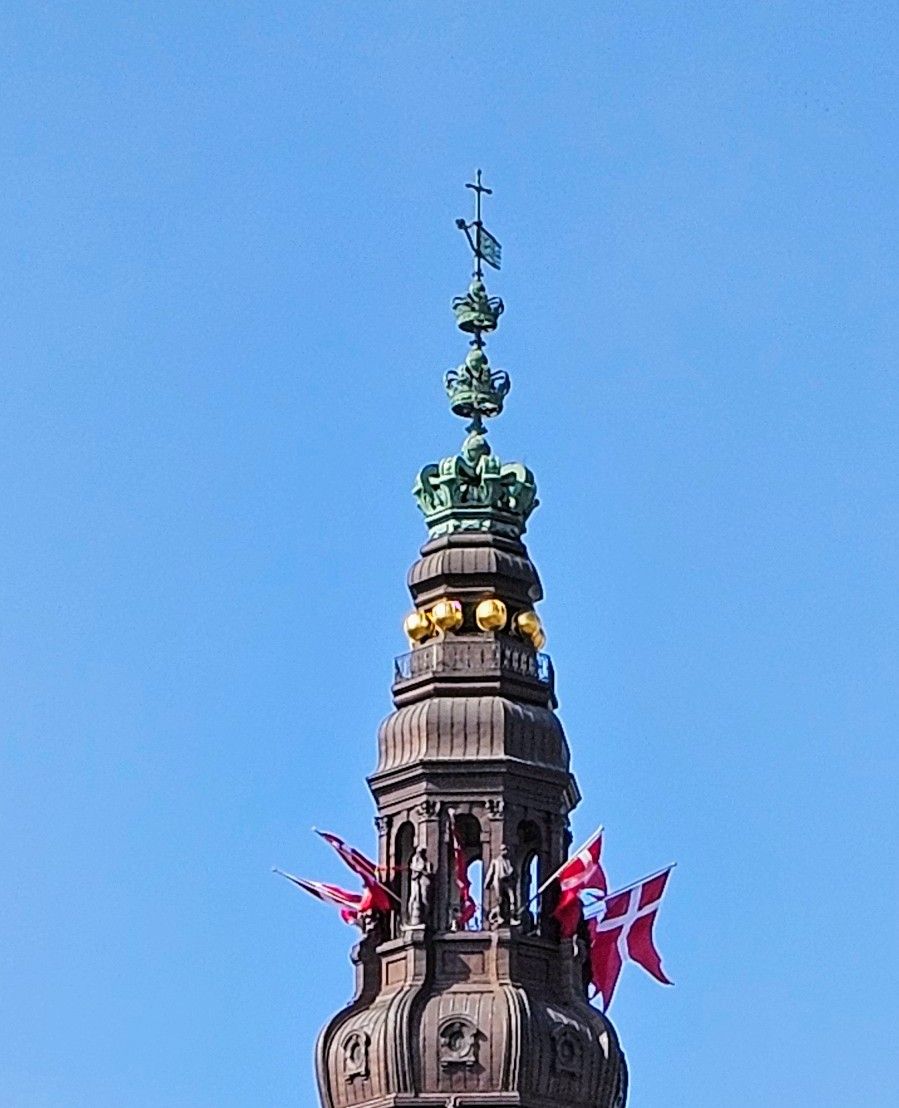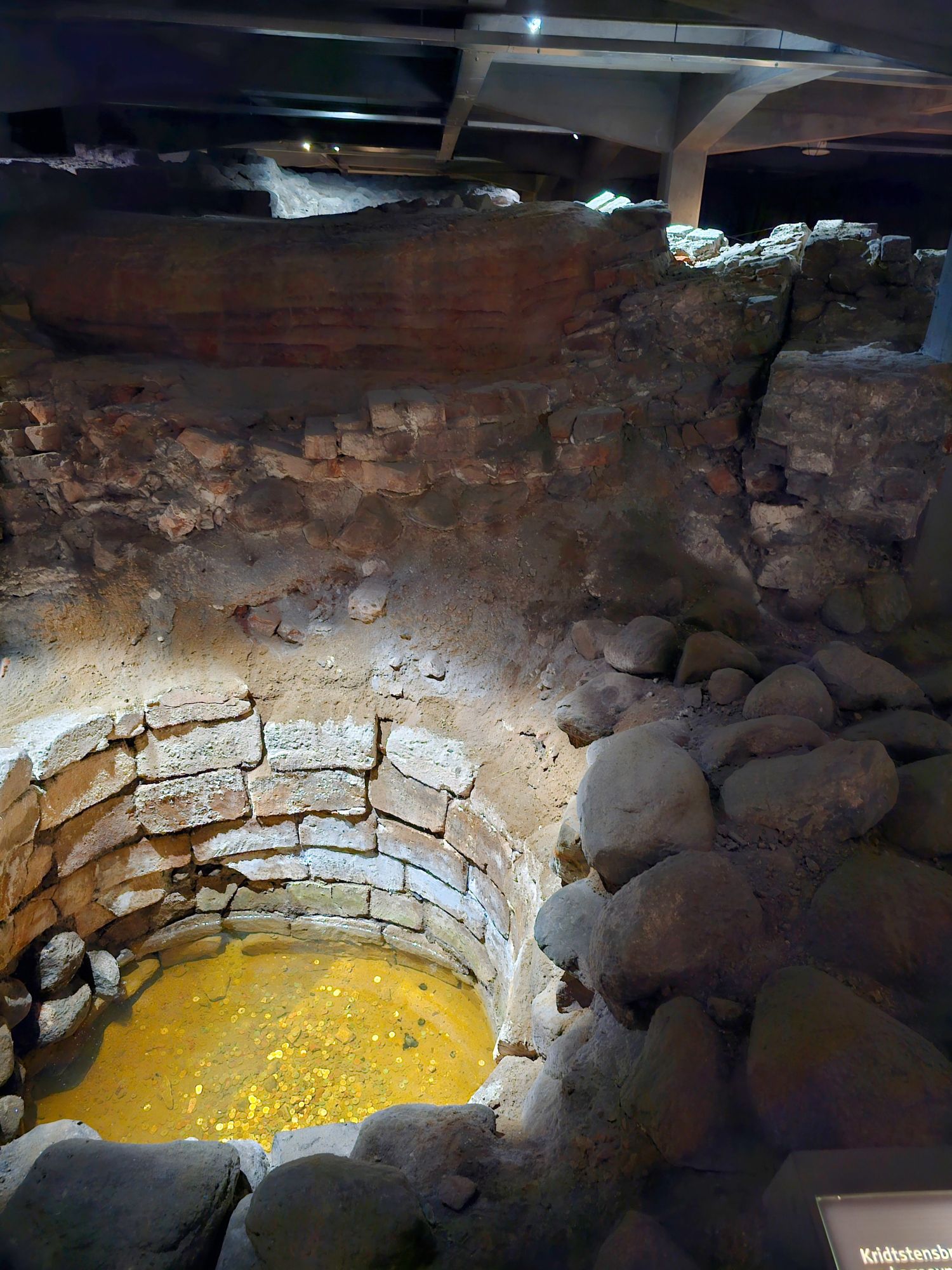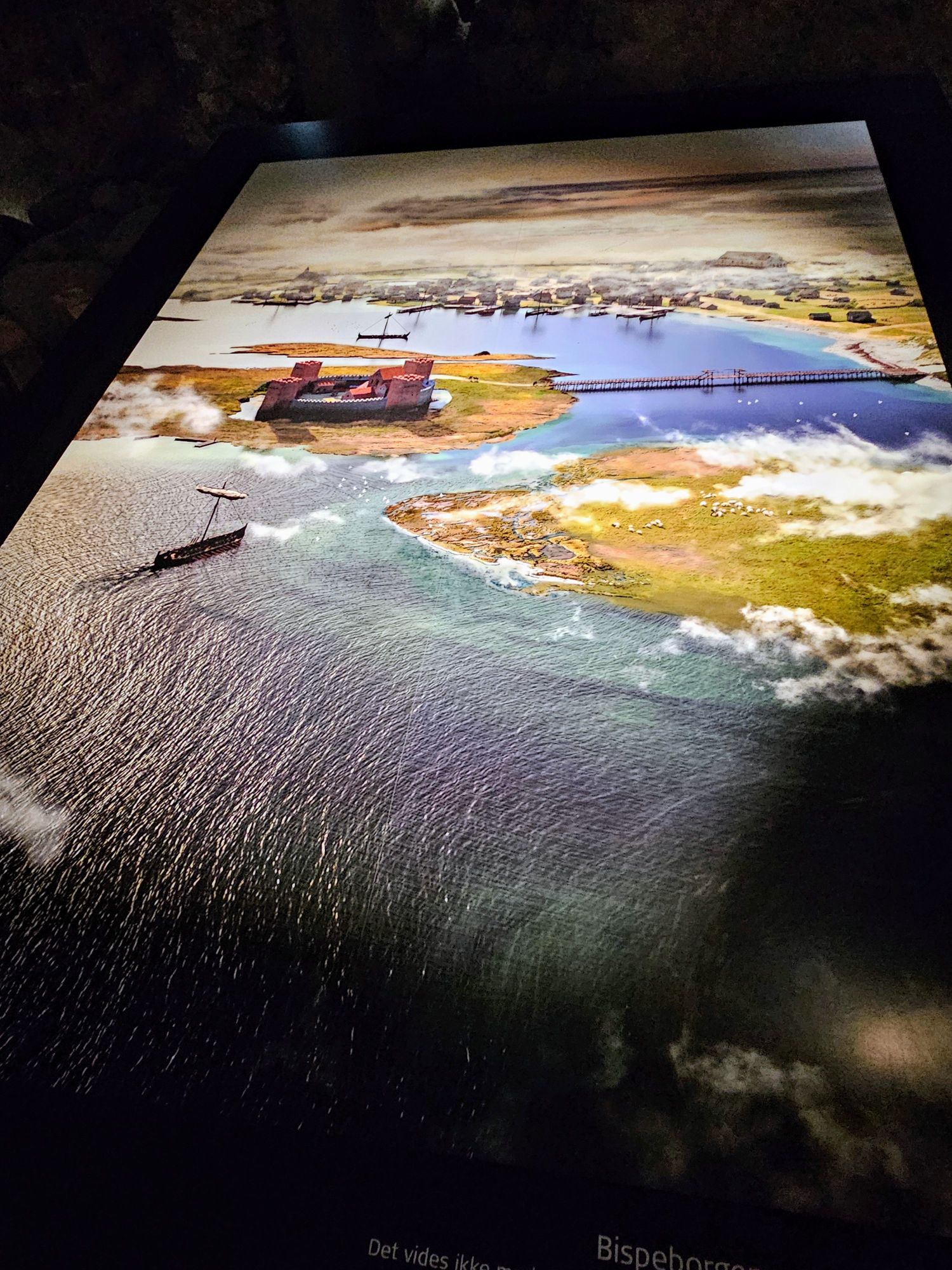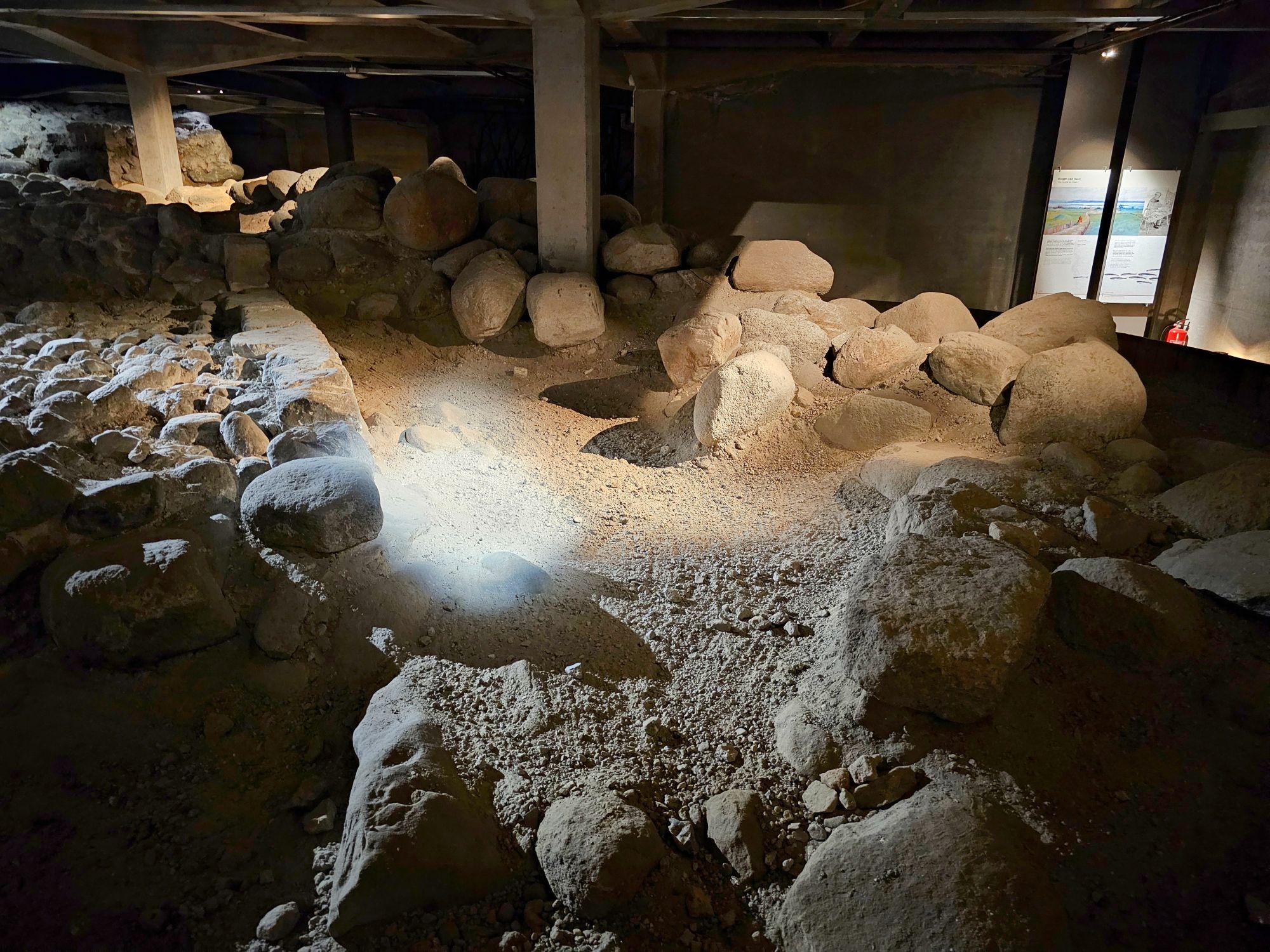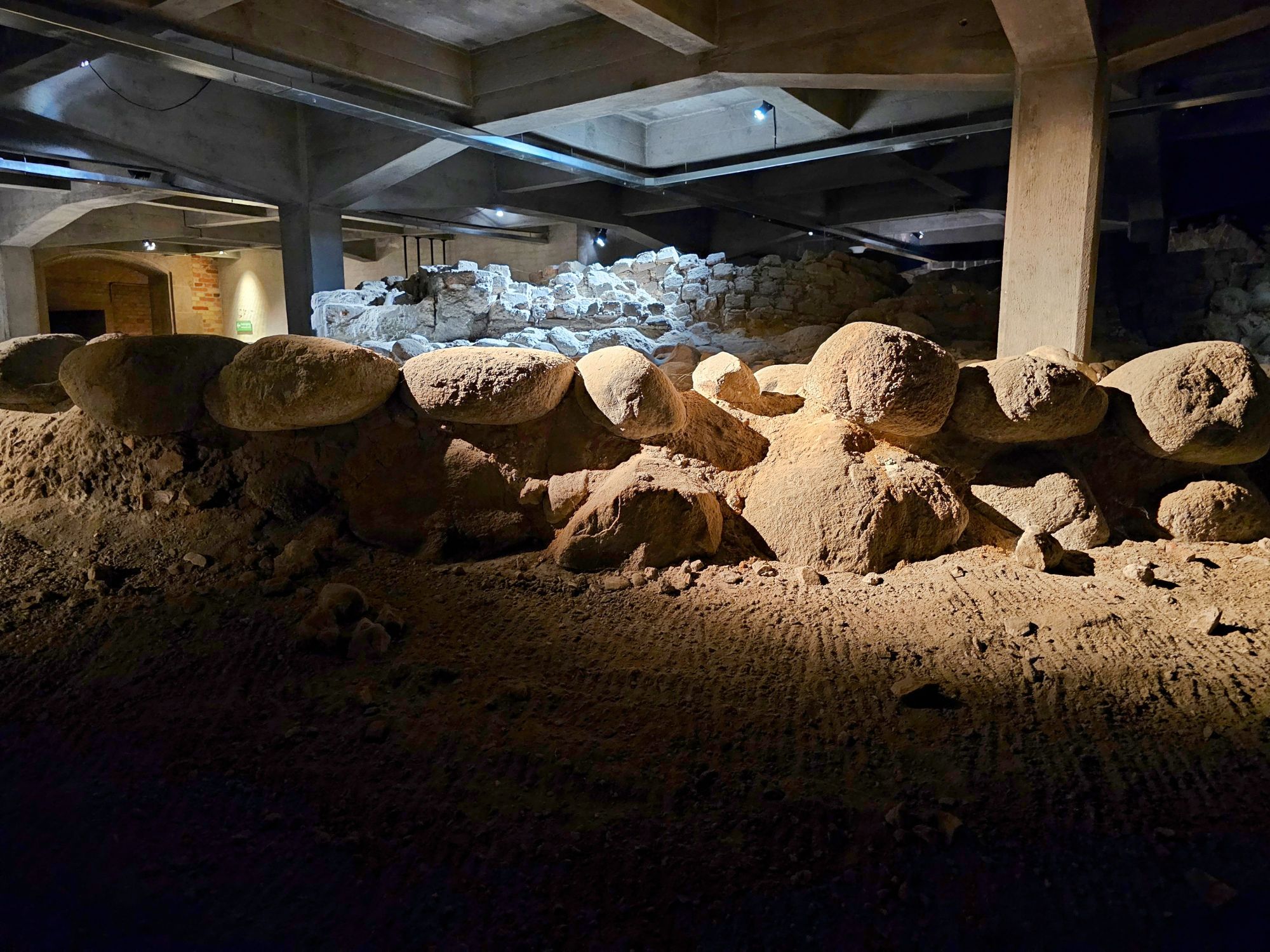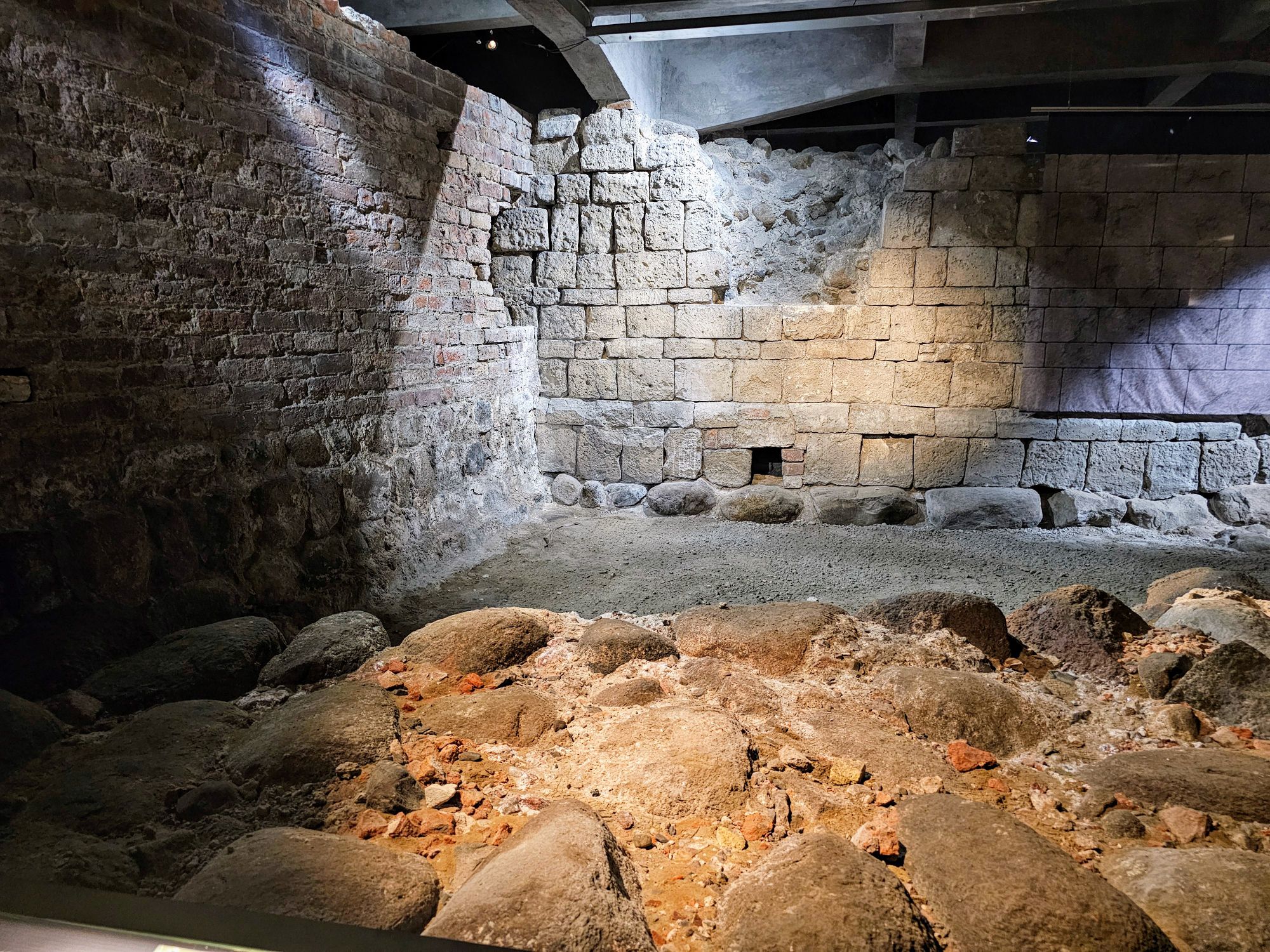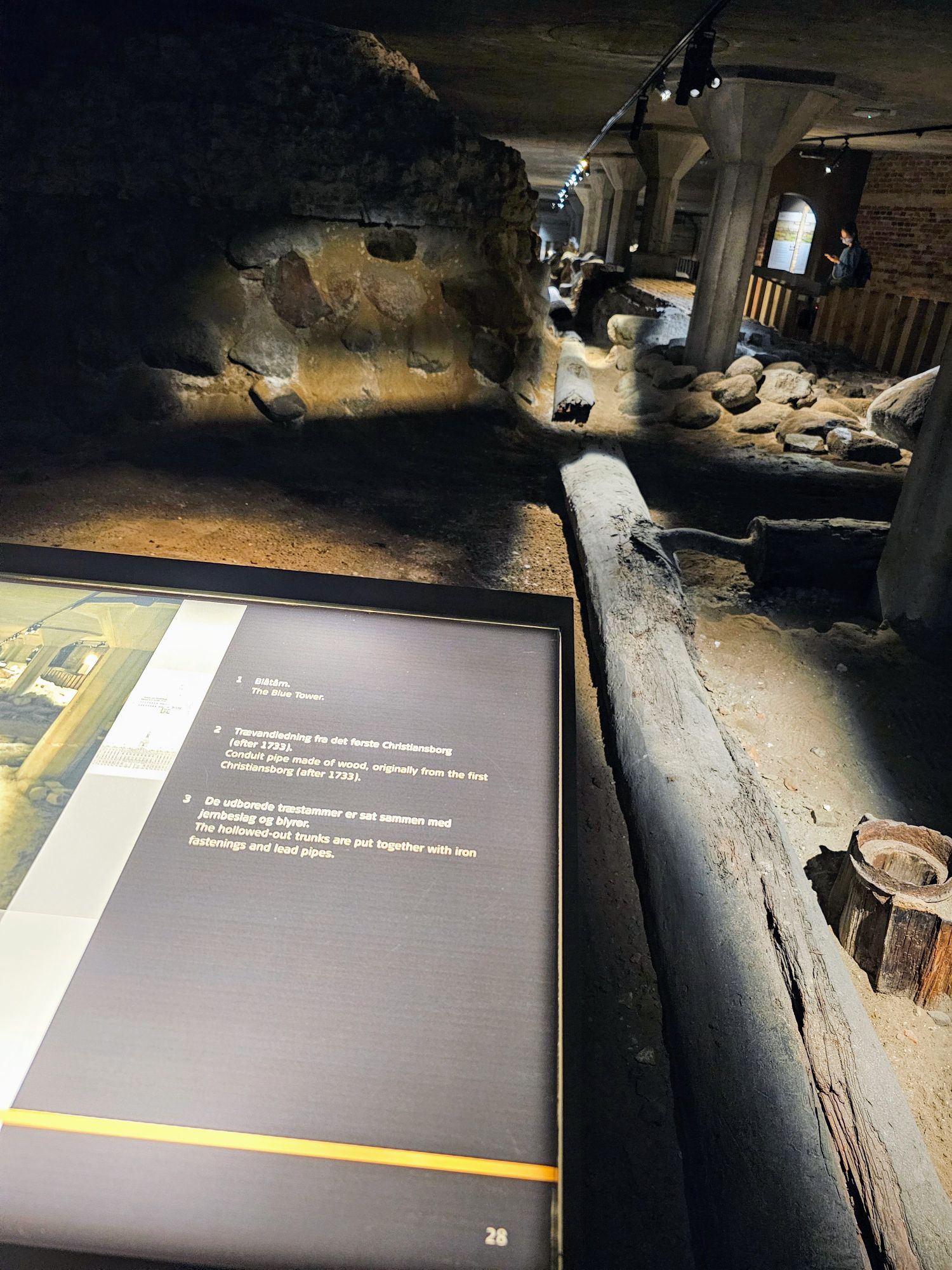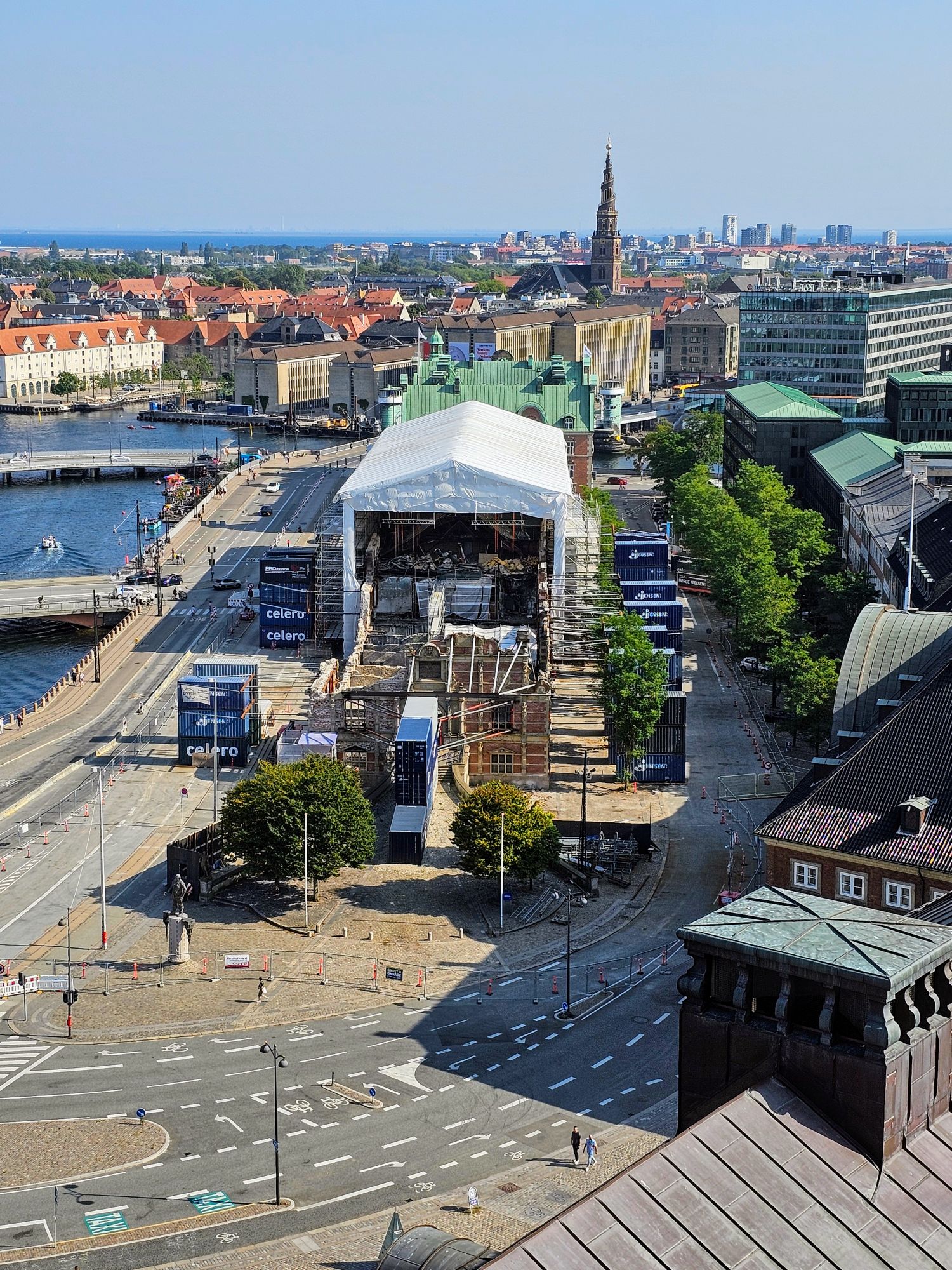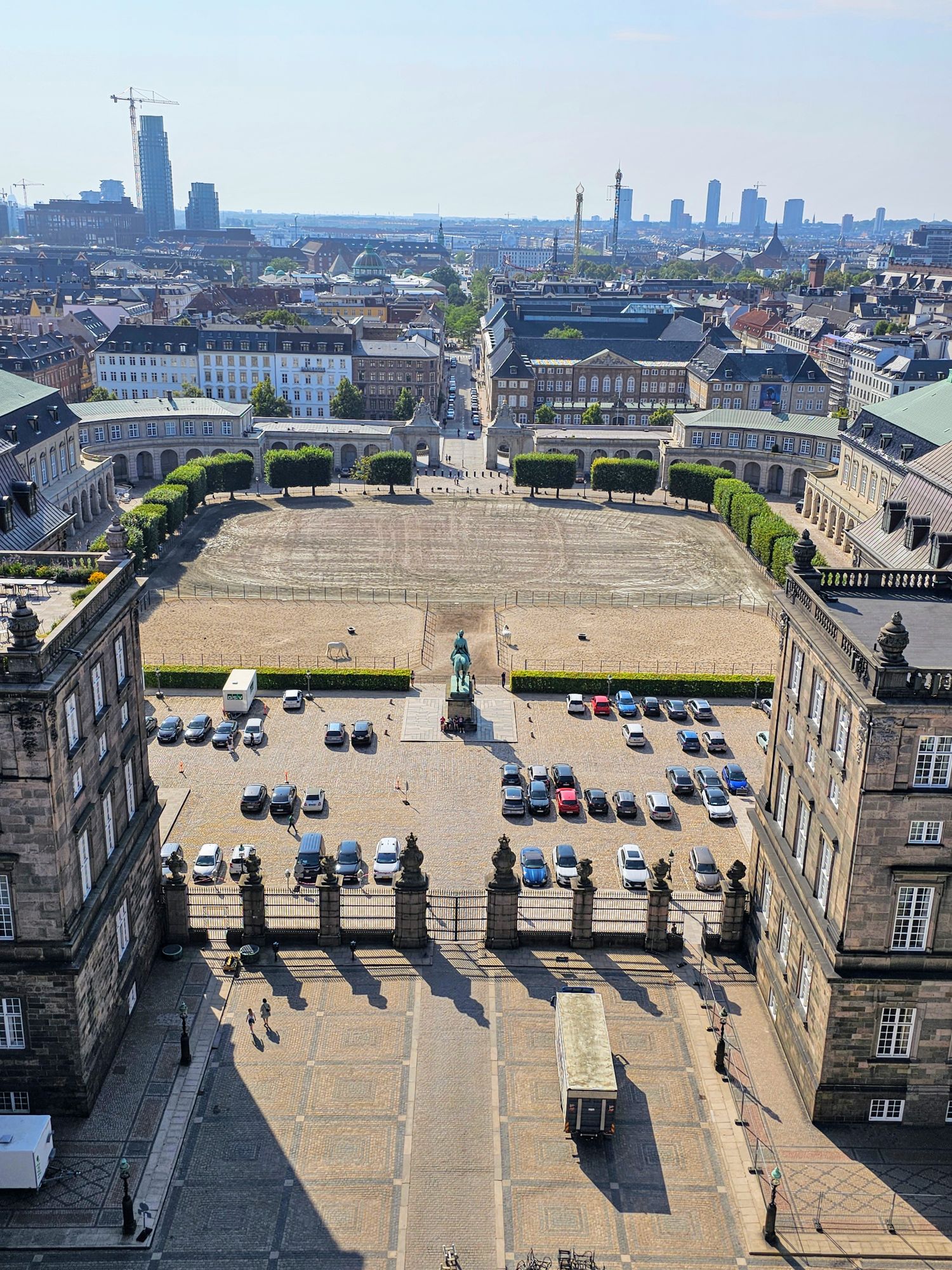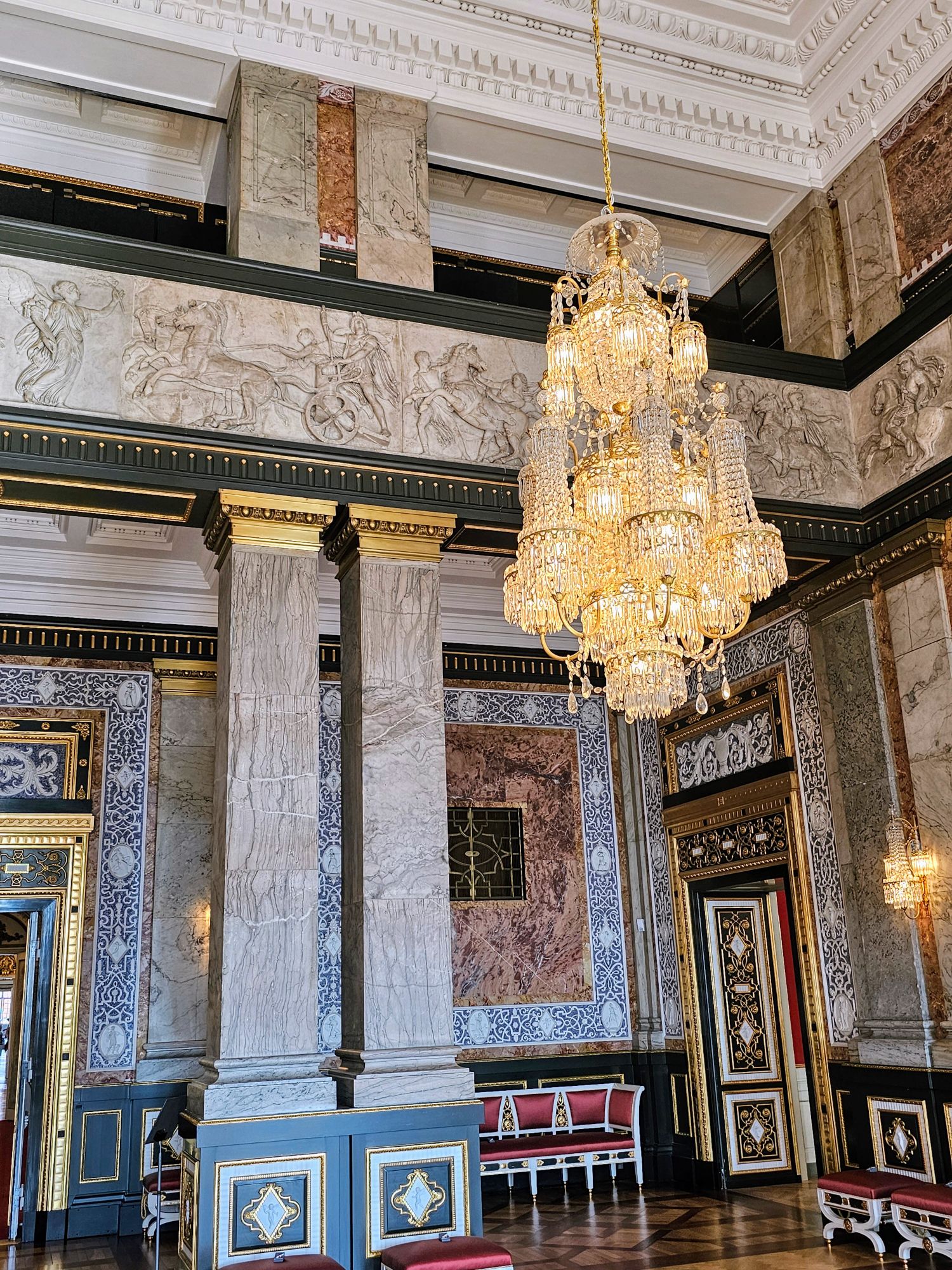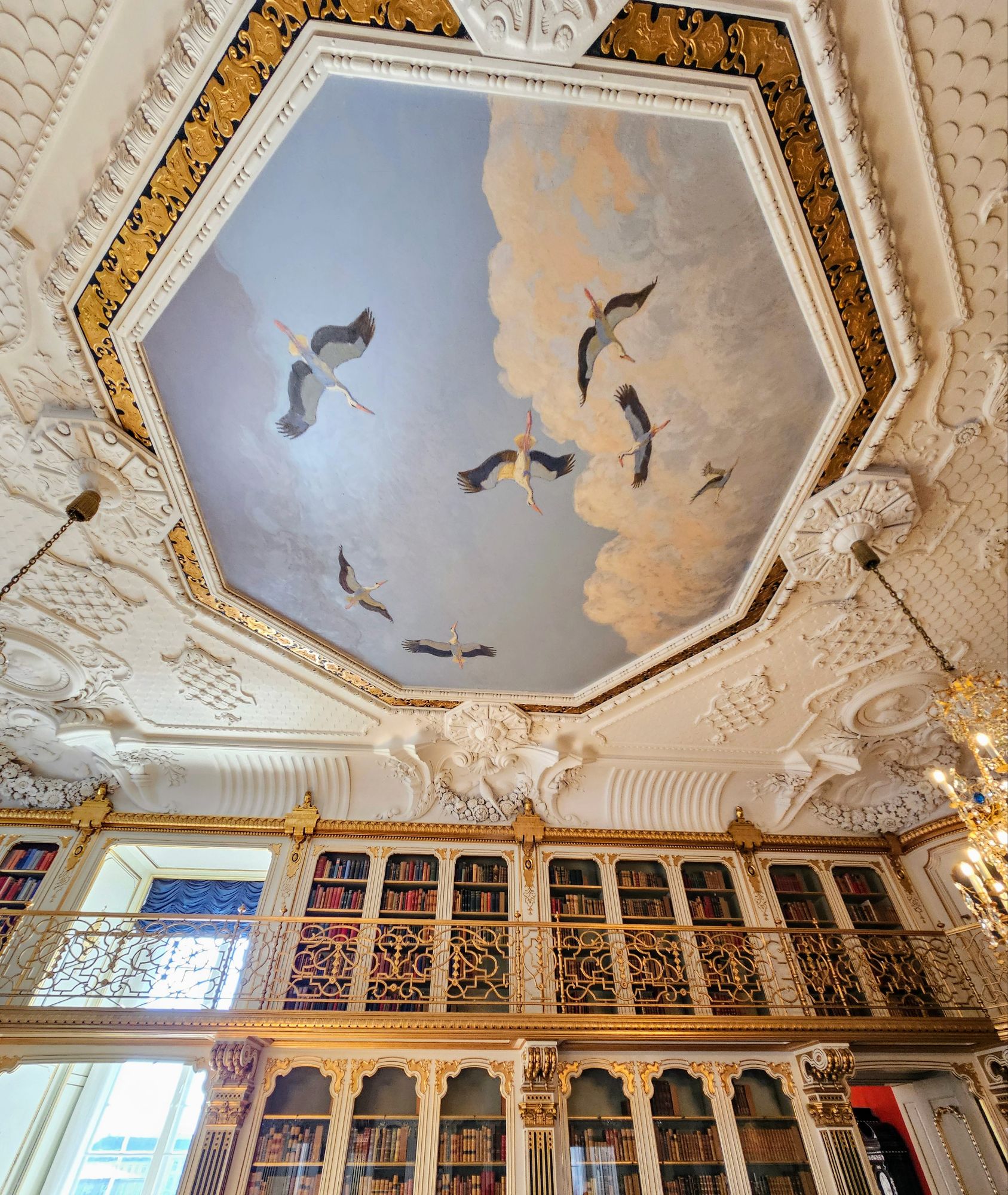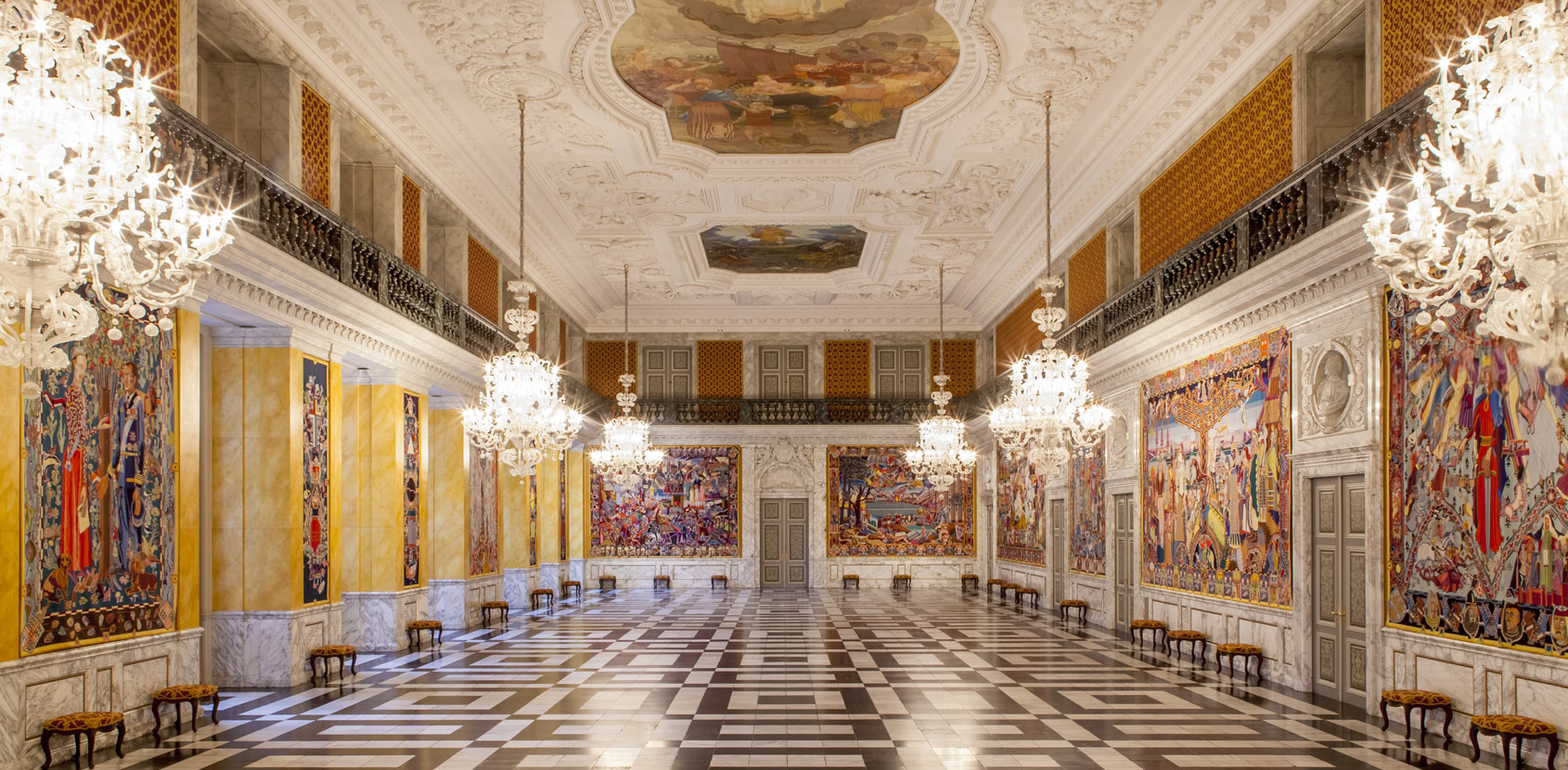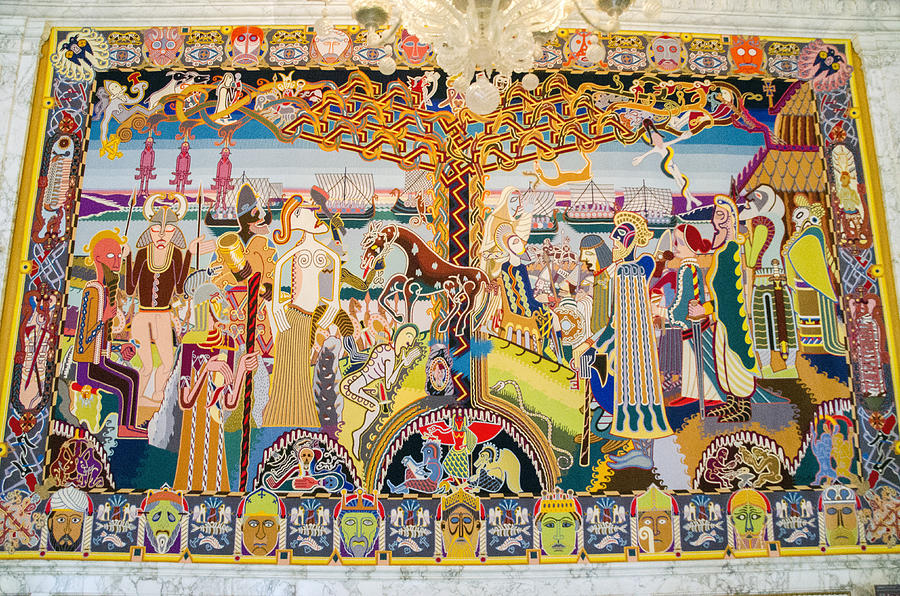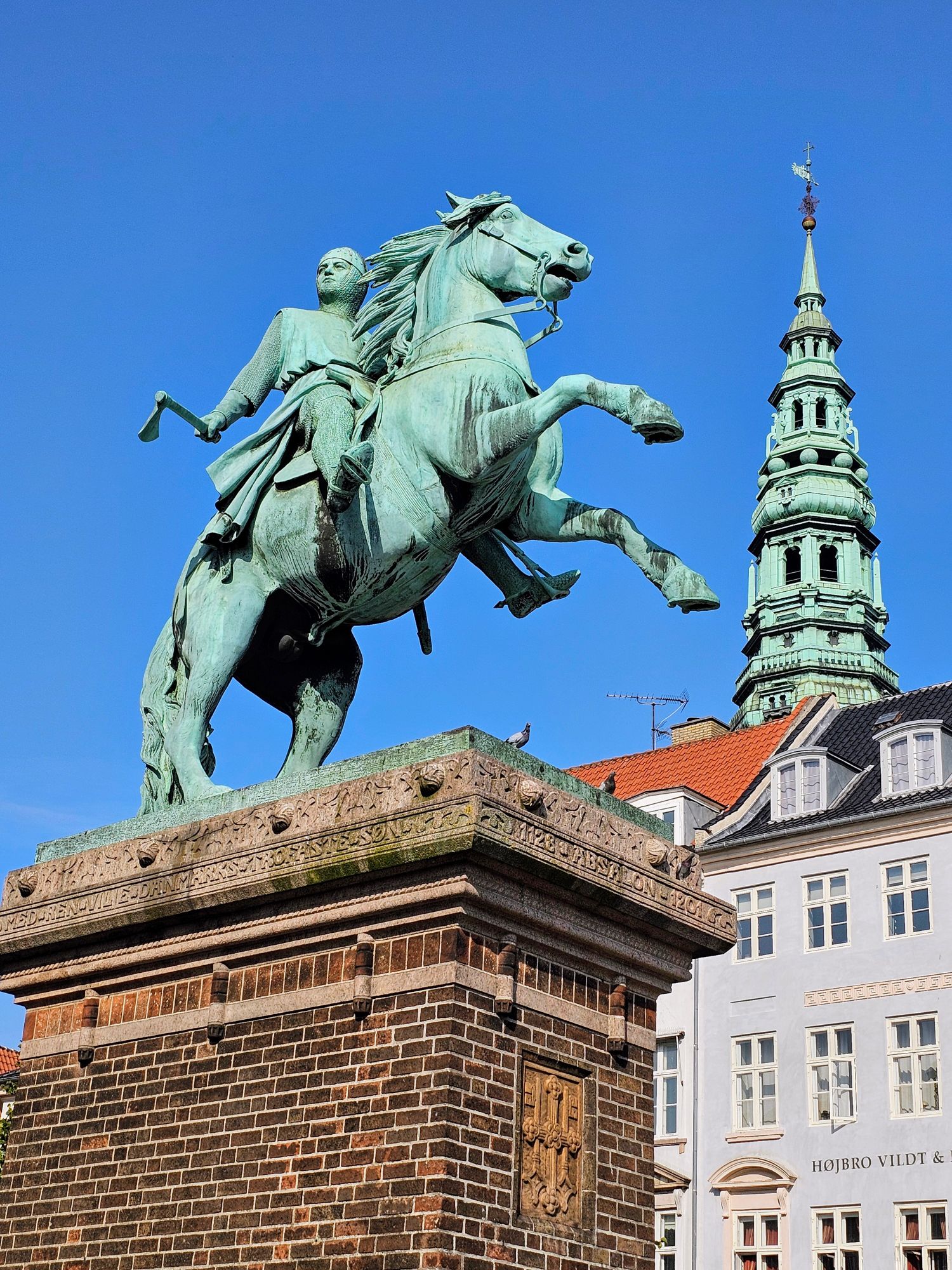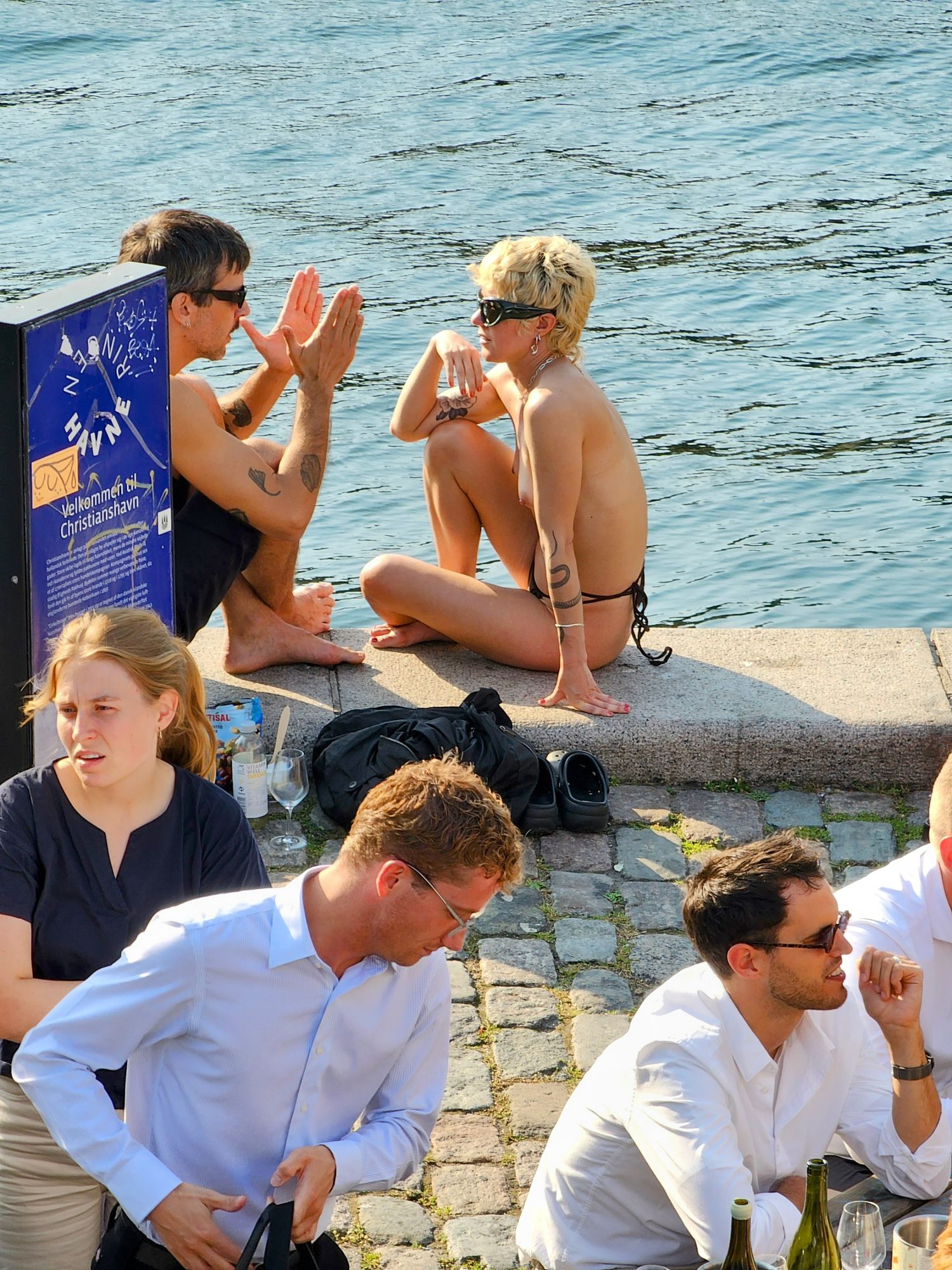We spent the next day exploring Christiansborg Palace, which is pretty much dead center in Copenhagen. This is an exterior shot of the palace, with it’s triple crown spire.
The palace only had one crown until 1934, when some politician decided it needed three because it looked too much like a local railway station. Typical politicians…nobody is going to mistake that building for a railway station!
There is plenty to see here. We started out in the ruins of the previous castles that lay under the current palace. The very first structure here was Bishop Absalon’s Castle, built in 1167 on what was then an island just outside Copenhagen Harbor. This well and the brickwork immediately adjacent to it were part of this castle, which stood until 1369.
This is a depiction of what Absalon’s Castle setting would have looked liked, if you ignore the fact they used Lego blocks to represent it. They like to allude to Lego’s in Denmark since they were invented here.
This photo shows you the foundations of Absalon’s Castle on the right, and the subsequent Copenhagen Castle on the left. Absalon Castle was destroyed after Denmark was defeated in 1369 in a conflict with the Hanseatic League. The League hated the place so much they sent 40 stonemasons to meticulously demolish the castle stone by stone.
Copenhagen Castle, the foundation of which is in the rear of this photo, was built in the late 14th century on the ruins, and included a moat.
Here are ruins of Copenhagen Castle showing the intricate stonework involved during its building. You can even see a drain hole at the bottom of the wall.
This gives you an idea of how thick the walls of the castle were.
During the excavations they found these wooden conduit pipes for sewage. They used hollowed out tree trunks for sewer lines. Pretty smart! These were installed sometime after 1733.
Ok, enough ruins. We then ventured up into the palace tower, with excellent views over Copenhagen. The building shrouded in the foreground is the Stock Exchange which just burned down this past April. They are intent on bringing it back to it’s former glory. You can see numerous shipping containers being used as supports for the walls that are remaining.
This is a view looking out over the Royal Stables, which are still in use!
The final part of our visit was a guided tour of the Royal Reception Rooms. This is called the Alexander Hall, as just to the left of the chandelier, on the marble frieze, is a depiction of Alexander the Great on a chariot. Love all of the different colors in this room!
The Queen’s Library had a very artistic ceiling.
The most impressive room in the palace is the great hall, which is filled with various tapestries. I didn’t get a photo, so here is one from the internet.
Here is one of the tapestries. These are a fairly recent addition to the palace.
After the palace we walked around the area and I saw this statue of Bishop Absalon, the guy responsible for the first castle we saw portions of in the ruins. He is perceived as having been a great Danish churchman, statesman and warrior, and this was built in his honor in 1902.
It was another warm day, and on the way back to our hotel we saw this topless woman on the waterfront. We would see this several more times the next day, which turned out to be warm as well. I guess the Danes are much more free about their bodies than Americans! It also happens there was a wine store right behind them and nearly everybody seemed to have a bottle on hand, so that might have had something to do with it!
Coming up next, more Copenhagen, as we visit Ny Carlsberg Glyptotek museum.
